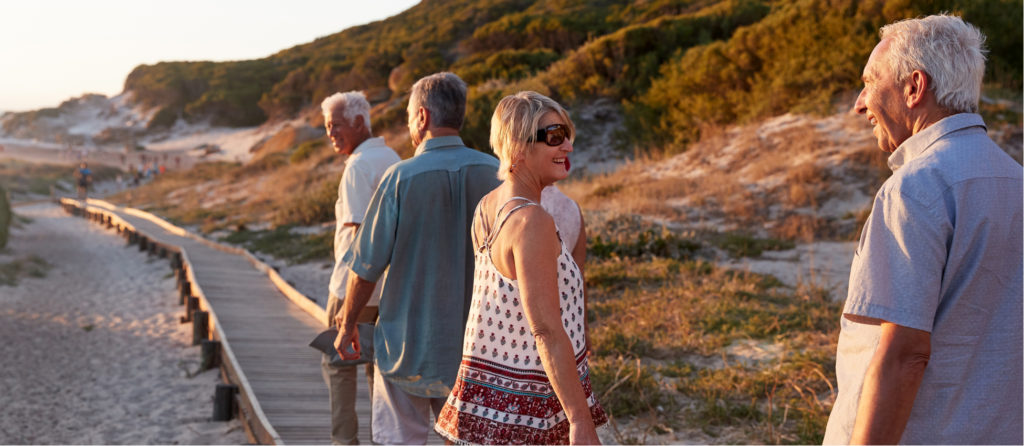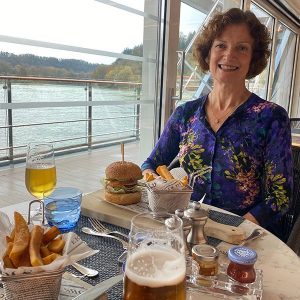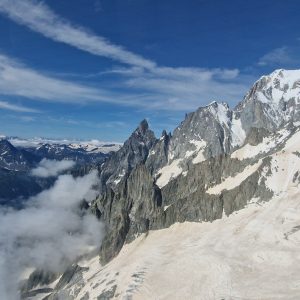Excursions, history and politics
On Wednesday most of us opted to join the excursion to Famagusta. We left at 9am and returned around 6.30pm so it was a very full, fascinating day, particularly enhanced by Merrek’s insightful commentary on his island’s history. Priced at £35 with an excellent lunch in a beachside restaurant and including museum entrance fees it was, again, good value.
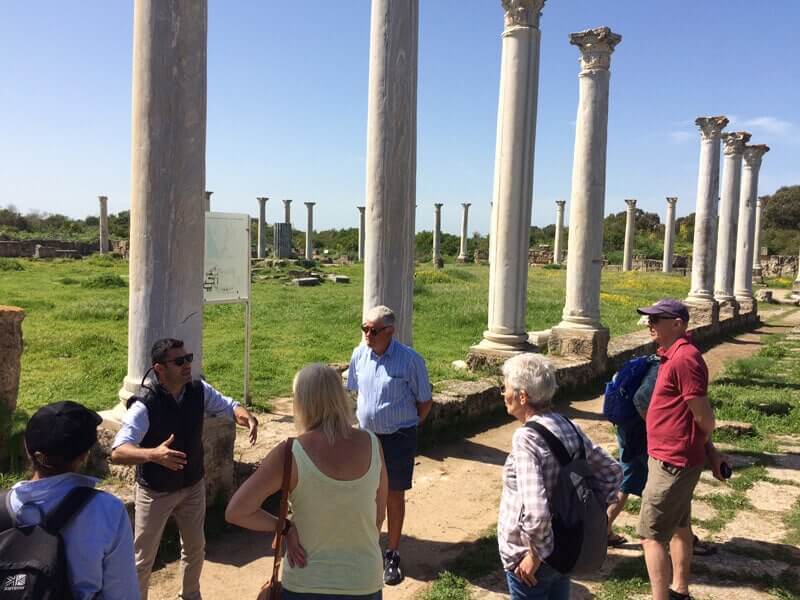 Our first stop was St. Barnabas’ Monastery and Icon Museum near the ancient Roman city of Salamis. The site consists of a church, now an icon museum, a monastery housing a small, but stunning, archaeological collection of Cypriot artefacts dating back as far as the 7th Century BC and a mausoleum built on the spot where the Saint’s remains were (reputedly) discovered. The patron saint of the island, Barnabas was a Disciple and one of the founders of the Greek Orthodox Church who is celebrated on the 11 June with a special mass and large festival. Since partition, after a gap of 31 years, this event was reinstated in 2005 and many Greek Cypriots are now allowed to visit, perhaps a small glimmer of hope for the future.
Our first stop was St. Barnabas’ Monastery and Icon Museum near the ancient Roman city of Salamis. The site consists of a church, now an icon museum, a monastery housing a small, but stunning, archaeological collection of Cypriot artefacts dating back as far as the 7th Century BC and a mausoleum built on the spot where the Saint’s remains were (reputedly) discovered. The patron saint of the island, Barnabas was a Disciple and one of the founders of the Greek Orthodox Church who is celebrated on the 11 June with a special mass and large festival. Since partition, after a gap of 31 years, this event was reinstated in 2005 and many Greek Cypriots are now allowed to visit, perhaps a small glimmer of hope for the future.
The next visit was to the ancient city of Salamis, founded around the time of the Trojan Wars and the capital of Cyprus as far back as 1100BC. A fascinating Roman site that extends over 36sqm, though much still awaits excavation. The remains of the Palaestra, the city’s gymnasium used for exercise and pampering, with its wonderful columns now overgrown with wildflowers, is particularly atmospheric. The theatre, which once seated 15,000 spectators, is partially restored and occasionally used for outdoor events.
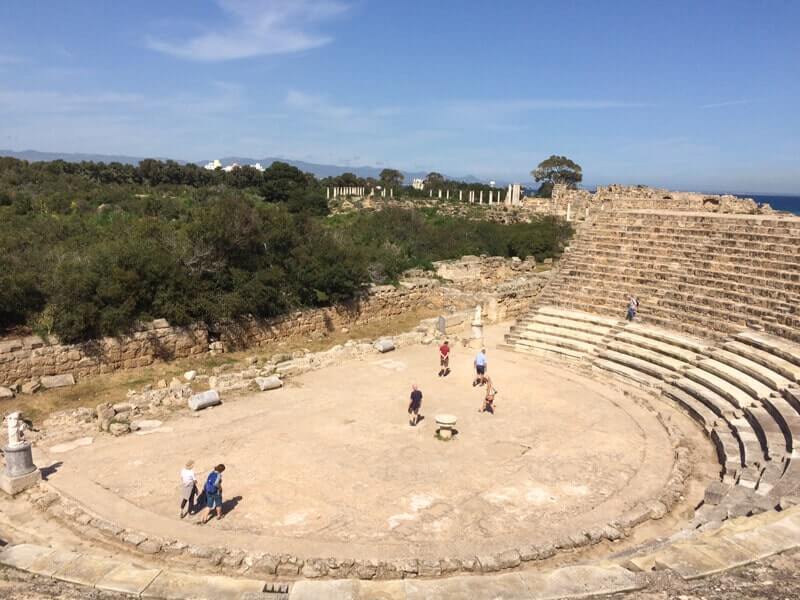 After a good lunch in a beachside hotel, which gave us a chance to catch our breath, and following a quick walk along the beach, we headed towards Varosha the ‘ghost town’ of Famagusta. Until 1974 this was the island’s main tourist destination and playground of the rich and famous, located around a stunning golden sandy bay, it covers a 6sqkm area and has over 3,000 empty, dilapidated, buildings. Initially, we drove around the barbed wire fenced perimeter, patrolled by the Turkish Cypriot army, then to the beach where we got a real sense of both the scale and desolation. From our vantage point we viewed bombed, deserted, looted and overgrown blocks of apartments and hotels, incongruously, as we walked by locals sunbathing on the beach and a luxury hotel behind us – a surreal experience and stark monument of unresolved partition.
After a good lunch in a beachside hotel, which gave us a chance to catch our breath, and following a quick walk along the beach, we headed towards Varosha the ‘ghost town’ of Famagusta. Until 1974 this was the island’s main tourist destination and playground of the rich and famous, located around a stunning golden sandy bay, it covers a 6sqkm area and has over 3,000 empty, dilapidated, buildings. Initially, we drove around the barbed wire fenced perimeter, patrolled by the Turkish Cypriot army, then to the beach where we got a real sense of both the scale and desolation. From our vantage point we viewed bombed, deserted, looted and overgrown blocks of apartments and hotels, incongruously, as we walked by locals sunbathing on the beach and a luxury hotel behind us – a surreal experience and stark monument of unresolved partition.
A city with roots dating back to 274BC, in medieval times Famagusta became the most important port on the island, inevitably, fought over by many countries. Its impressive city walls, 9km long and, in some places, 9 metres in width, are a reminder of a once glorious past. The compact old city with its winding lanes is home to tourist shops, cafes and many churches – apparently the Venetians (as usual, they were here too) built one church for each day of the year – many of which are now converted into mosques or derelict. After free time wandering around and enjoying delicious baklava in a café, we boarded the mini bus and headed back to the hotel. A very insightful and enjoyable day.
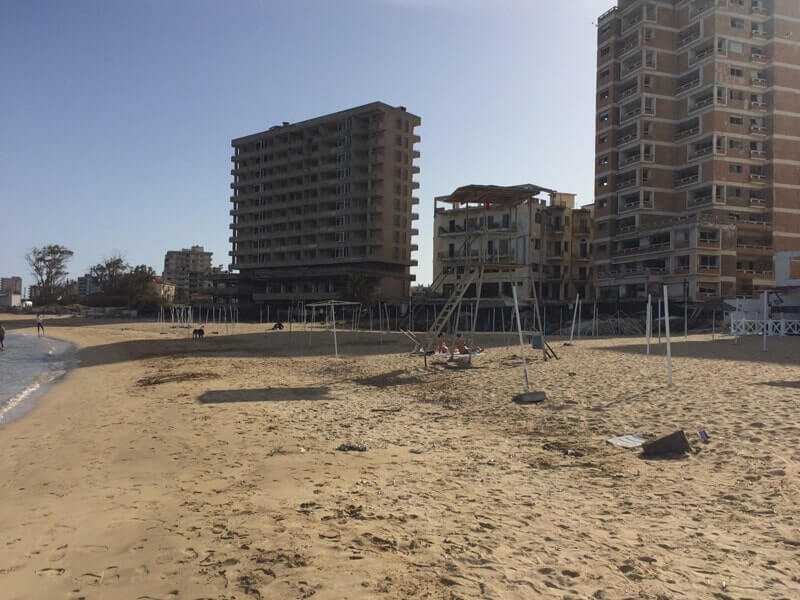 Cyprus’ strategic position midway between Europe and the Middle East has been prized and occupied by many nations, latterly becoming a dominion of the British Empire until independence in 1960, which proved unpopular with Greek Cypriots who wanted unification with Greece. Following years of guerrilla warfare – on both sides – and in spite of the presence of a UN peacekeeping force, tensions and atrocities continued culminating in the 1974 Turkish invasion. Many thousands of Greek Cypriots fled to the south of the island and Turkish Cypriots to the north with the border then sealed. The border was opened in 2003 for both sides to return to their original villages to see what they had left behind, but despite international efforts to facilitate reconciliation the island still remains divided amidst entrenched political differences.
Cyprus’ strategic position midway between Europe and the Middle East has been prized and occupied by many nations, latterly becoming a dominion of the British Empire until independence in 1960, which proved unpopular with Greek Cypriots who wanted unification with Greece. Following years of guerrilla warfare – on both sides – and in spite of the presence of a UN peacekeeping force, tensions and atrocities continued culminating in the 1974 Turkish invasion. Many thousands of Greek Cypriots fled to the south of the island and Turkish Cypriots to the north with the border then sealed. The border was opened in 2003 for both sides to return to their original villages to see what they had left behind, but despite international efforts to facilitate reconciliation the island still remains divided amidst entrenched political differences.
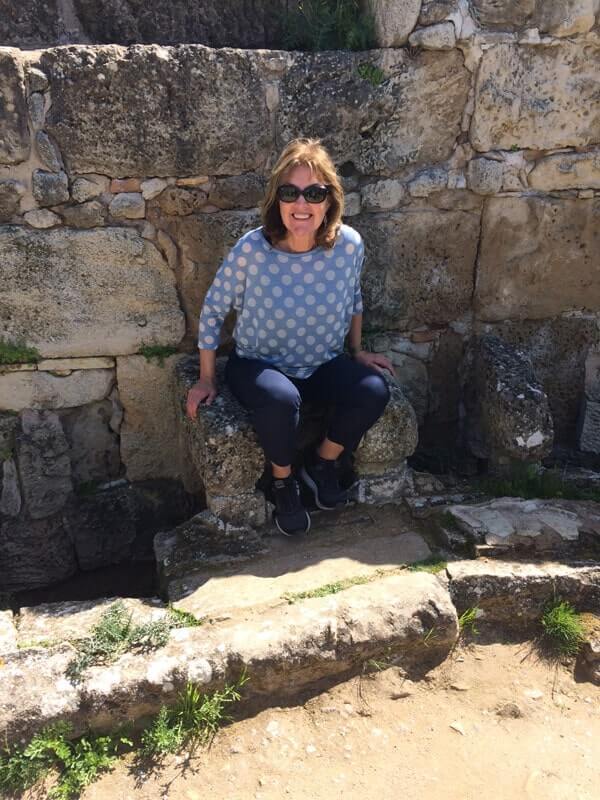 Back at the hotel, we experienced such incredible storms on Thursday evening, which continued into Friday, that our final walk was cancelled. As an alternative, Merrek organized a trip to Nicosia, the island’s capital and the only partitioned city in Europe. Since Cyprus joined the EU in 2003, a softening of restrictions has enabled both sides to cross the border with relative ease. As Northern Cyprus is much cheaper – for example a litre of petrol is the equivalent of 70p compared with £1.30 – many Greek Cypriots cross to buy food, petrol and other goods and to meet old friends.
Back at the hotel, we experienced such incredible storms on Thursday evening, which continued into Friday, that our final walk was cancelled. As an alternative, Merrek organized a trip to Nicosia, the island’s capital and the only partitioned city in Europe. Since Cyprus joined the EU in 2003, a softening of restrictions has enabled both sides to cross the border with relative ease. As Northern Cyprus is much cheaper – for example a litre of petrol is the equivalent of 70p compared with £1.30 – many Greek Cypriots cross to buy food, petrol and other goods and to meet old friends.
By now, day 6 of the holiday, with Covid-19 looming large and a combination of museums and public buildings closed, together with the inclement weather, we had the streets to ourselves with no other tourists in sight. A slightly eerie feeling but, if you didn’t mind the sogginess, wonderful. We stopped at a section of the green line – the 140 mile long border which divides the island drawn up by the Brits in 1960 – which runs through the middle of the city which is, at one point, just a flimsy fence. From here life on the Greek side looked rather more affluent. This was later in evidence as we walked through streets of the old city which still has a considerable number of abandoned or dilapidated Ottoman style houses and merchant villas.
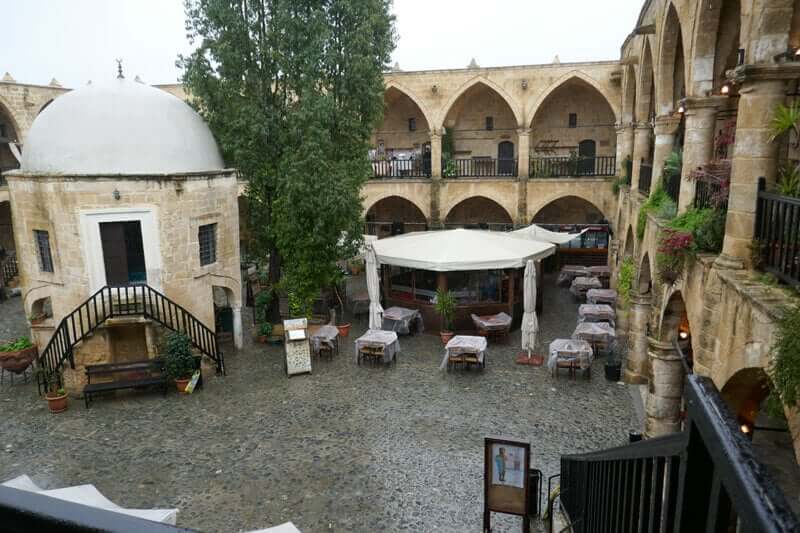 In the heart of the old town is Buyuk Han, built in 1572 as an inn for merchants and their animals to stay overnight. Well-preserved, the rooms now house small artisan shops selling a range of goods such as lace, antiquities, ceramics, artwork and corner cafes where, in spite of the rain, a few old men played tavla (backgammon) accompanied by their Turkish coffee. In the only other café open we enjoyed a cappuccino (12TL, about £1.30) and sampled a delicious halloumi borek with honey, typically eaten by the locals for breakfast. A quick visit to the nearby covered market revealed empty stalls but, luckily, the Locum – Turkish Delight – shop was open. We sampled many different traditional varieties, flavoured with rosewater, pistachio, bergamot, orange, lemon, to name but a few. Delicious. This being the only shop open we all came away with lots of goodies to be taken home as presents.
In the heart of the old town is Buyuk Han, built in 1572 as an inn for merchants and their animals to stay overnight. Well-preserved, the rooms now house small artisan shops selling a range of goods such as lace, antiquities, ceramics, artwork and corner cafes where, in spite of the rain, a few old men played tavla (backgammon) accompanied by their Turkish coffee. In the only other café open we enjoyed a cappuccino (12TL, about £1.30) and sampled a delicious halloumi borek with honey, typically eaten by the locals for breakfast. A quick visit to the nearby covered market revealed empty stalls but, luckily, the Locum – Turkish Delight – shop was open. We sampled many different traditional varieties, flavoured with rosewater, pistachio, bergamot, orange, lemon, to name but a few. Delicious. This being the only shop open we all came away with lots of goodies to be taken home as presents.
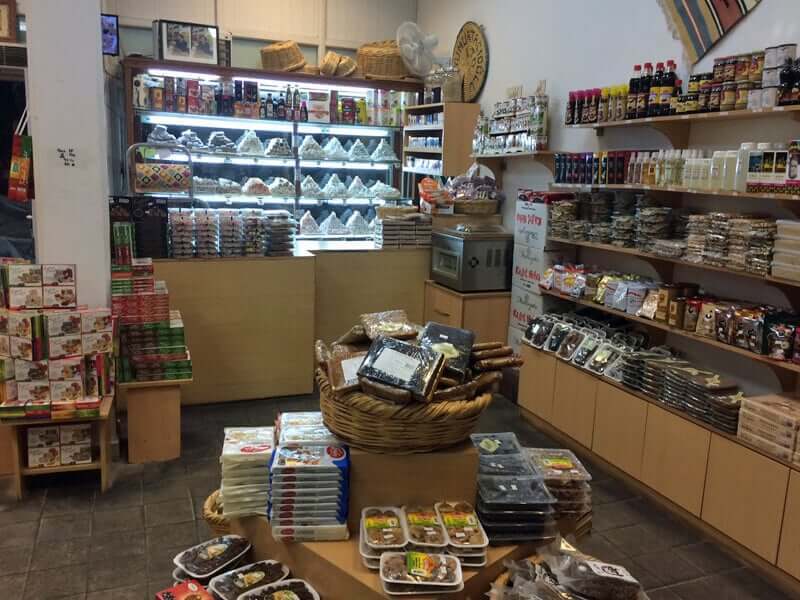 Being on holiday during the escalating Covid-19 pandemic was a strange, unusual, experience as the island went into lockdown. In spite of this, Merrek and everyone at Hotel Lapida were calm and, if they were (understandably) concerned about cancelled flights, bookings and redundancies, they didn’t let any of their concerns affect the very high levels of service and care shown to our group, leaving us to fully enjoy the holiday. Also worth mentioning, many in the group felt the holiday offered exceptional value. With costs in Northern Cyprus at least 20% cheaper than the South, it also means your spending money goes a long way too.
Being on holiday during the escalating Covid-19 pandemic was a strange, unusual, experience as the island went into lockdown. In spite of this, Merrek and everyone at Hotel Lapida were calm and, if they were (understandably) concerned about cancelled flights, bookings and redundancies, they didn’t let any of their concerns affect the very high levels of service and care shown to our group, leaving us to fully enjoy the holiday. Also worth mentioning, many in the group felt the holiday offered exceptional value. With costs in Northern Cyprus at least 20% cheaper than the South, it also means your spending money goes a long way too.
With email addresses exchanged amongst the group we hopefully will be able to meet for a reunion supper when Covid-19 is behind us. The restaurant of choice – Turkish Cypriot, naturally.
My ‘solo’ Solos walking holiday was a great success. And when the shops are open again I’ll buy my own rucksack. And work on my uphill fitness. Well, I will once I’ve stopped eating the Turkish Delight – with no visits permitted under the current lockdown there’s no-one to give it to. Every cloud!
Chrissy Nason travelled on behalf of Silver Travel Advisor with our partner, Solos Holidays, on their North Cyprus Walking holiday 7–14 March 2020.
With thanks to Mike Kirwan for sharing some of his photos for this article.
Silver Travel Advisor recommends Solos Holidays.
